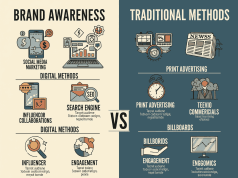In today’s digital landscape, where attention spans are fleeting and competition for engagement is fierce, businesses and brands are constantly searching for new ways to connect with their audiences. One of the most effective strategies emerging in the realm of content marketing is the use of interactive content. Unlike traditional content forms, interactive content invites users to actively engage rather than passively consume, creating a more immersive experience. This article explores innovative trends in interactive content and how they captivate audiences.
Understanding Interactive Content
Interactive content can be defined as any type of content that actively involves the user, enabling them to engage in a two-way interaction. Common forms include quizzes, polls, assessments, games, interactive infographics, and augmented reality (AR) experiences. The key difference from static content is that interactive content not only informs but also entertains and engages, encouraging users to participate actively.
Why Interactive Content Matters
1. Enhances User Engagement
Interactive content tends to hold users’ attention longer compared to traditional content. According to studies, users are more likely to retain information when they are involved in the learning process. Engagement metrics often soar with interactive formats, leading to better conversion rates and more substantial relationships between brands and consumers.
2. Encourages Shareability
Content that invites interaction is more likely to be shared across social media. When users are involved in creating or completing something, they are more inclined to share their experience with their followers. This organic sharing expands reach and establishes a stronger online presence.
3. Provides Valuable Data Insights
Interactive content allows brands to gather rich data about their audience’s preferences, behaviors, and demographics. Quizzes and polls can provide insights that help tailor marketing strategies, ensuring that the content resonates with the audience and addresses their needs effectively.
Innovative Trends in Interactive Content
1. Quizzes and Assessments
Quizzes are a staple of interactive content, offering users a fun way to engage while learning something valuable. Brands such as BuzzFeed have successfully utilized quizzes to entertain and inform, driving substantial traffic and engagement. Businesses can create personalized assessments that provide insights or recommendations based on user answers.
2. Augmented Reality Experiences
AR technology has opened new avenues for immersive experiences. Brands like IKEA and Sephora have leveraged AR to allow customers to visualize products in their own environments. This not only enhances the shopping experience but also builds deeper connections with the audience by providing interactive and personalized interactions.
3. Interactive Infographics
Infographics are already a popular way to present information visually, but interactivity adds a layer of engagement. By incorporating elements like clickable charts or animated graphics, brands can foster a deeper understanding of complex information, encouraging users to explore further.
4. Gamification
Gamification involves applying game-design elements to non-game contexts, making tasks more engaging. Brands often use leaderboards, rewards, and challenges to motivate users. This not only boosts user engagement but can also drive loyalty and repeat visits.
5. Live Polling and Streaming
Incorporating live polls during webinars or live events allows audiences to contribute in real-time, making them feel more invested in the content. This trend enhances audience participation and can lead to dynamic discussions.
Best Practices for Creating Interactive Content
- Know Your Audience: Understanding your target demographic is crucial for creating relevant interactive content that resonates.
- Keep It Simple: While interactivity is essential, the user experience should remain intuitive. Complicated interfaces can deter engagement.
- Focus on Value: Ensure that the interaction provides value to users, whether it’s entertainment, education, or useful insights.
- Mobile Optimization: With a significant amount of content consumed on mobile devices, it’s essential to create interactive content that is mobile-friendly.
- Analyze and Adapt: Continually analyze how users interact with your content and adapt your strategies based on this data.
Conclusion
As digital content continues to evolve, the importance of interactive content cannot be overstated. By tapping into innovative trends, brands can create meaningful experiences that captivate audiences and foster lasting relationships. In an age where engagement is key, embracing interactivity may very well be the differentiating factor that propels brands to success in their marketing endeavors. As businesses continue to innovate and adapt, interactive content will undoubtedly play a pivotal role in shaping the future of digital storytelling.









